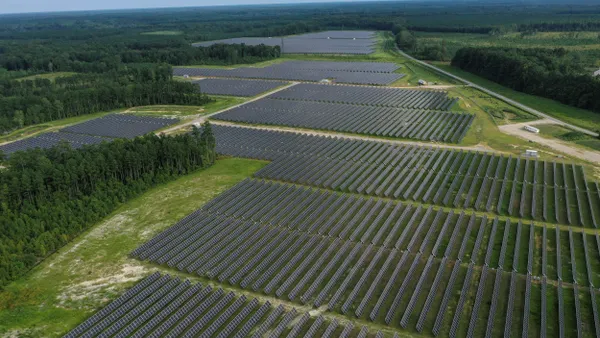Dive Brief:
- The City of Houston on Wednesday unveiled its first Climate Action Plan (CAP) to guide residents and businesses in reducing greenhouse gas (GHG) emissions and reaching carbon neutrality by 2050. The release coincided with the 50th anniversary of Earth Day.
- The CAP focuses on four areas, each with three key goals:
| Focus Area | Goals |
|---|---|
| Transportation |
|
| Energy transition |
|
| Building optimization |
|
| Materials management |
|
- The development of the 100-page CAP follows more than a year of consultation with community stakeholders, businesses and experts in the environment and energy sectors. Due to Houston's unique position as both the "energy capital of the world" and a hotspot for flooding and climate-related disasters, the CAP's release is "fairly historic," Chief Sustainability Officer Lara Cottingham told Smart Cities Dive.
Dive Insight:
Houston is home to one of the largest rates of per capita GHG emissions in the country, yet it wasn't until the destruction of Hurricane Harvey in 2017 that the city's perception of climate urgency really turned on its head. Despite decades of familiarity with floods and natural disasters, climate change was never an easy topic for Houston to formally address due to the city's history as the home of oil and gas, Cottingham said.
Harvey was a "turning point" of the city's — as well as residents' and businesses' — perspective of climate change, she explained.
"Everything we do, we view it now through this climate lens. Every dollar you spend ... is it something that you are doing as a result of Harvey? Is it a project that was re-prioritized as a result of Harvey?," she said. "It really does cause you to look at your world differently."
This record-breaking event, along with Mayor Sylvester Turner's role as vice-chair of Climate Mayors, sparked a new drive from the city to prioritize climate action. Climate Mayors strongly opposed the federal government's decision to pull out of the Paris Climate Accord in June 2017, and it didn't take long for Houston to join a long list of cities leading their own climate strategies to reach the Accord's targets.
By 2018, the city began garnering support for the development of the CAP. As the city slowly drew in the support of Houston-based corporations, it recognized the significant role these companies can play in lowering emissions globally. As those international corporations reduce emissions in Houston, Cottingham said, those efforts can eventually spread to facilities and subsidiaries around the world.
"Climate change is a global problem, it’s going to take a global solution, and Houston has a role to play in that," she said.
Just before the release of the CAP, the city unveiled Resilient Houston, an 186-page framework to address how the city can achieve long-term resilience across pillars including "safe and equitable neighborhoods" and "healthy and connected bayous." While addressing climate change is a thread woven throughout Resilient Houston, Cottingham said the CAP is a more detailed look at how climate can be addressed presently.
"Just to fit all of the resilience issues into one plan was a challenge … For climate, the CAP is another level of detail, another level of action," she said.
And while the CAP's release coincided with the novel coronavirus pandemic (COVID-19), Cottingham said climate leadership must continue through the duration of the challenge. She said COVID-19 is "the absolute worst way to reduce emissions," yet the virus' impact on climate will make 2020 an important year in assessing climate data to help inform future policymaking.
"The thing about climate change is it will be there once we get past COVID-19," she said.















